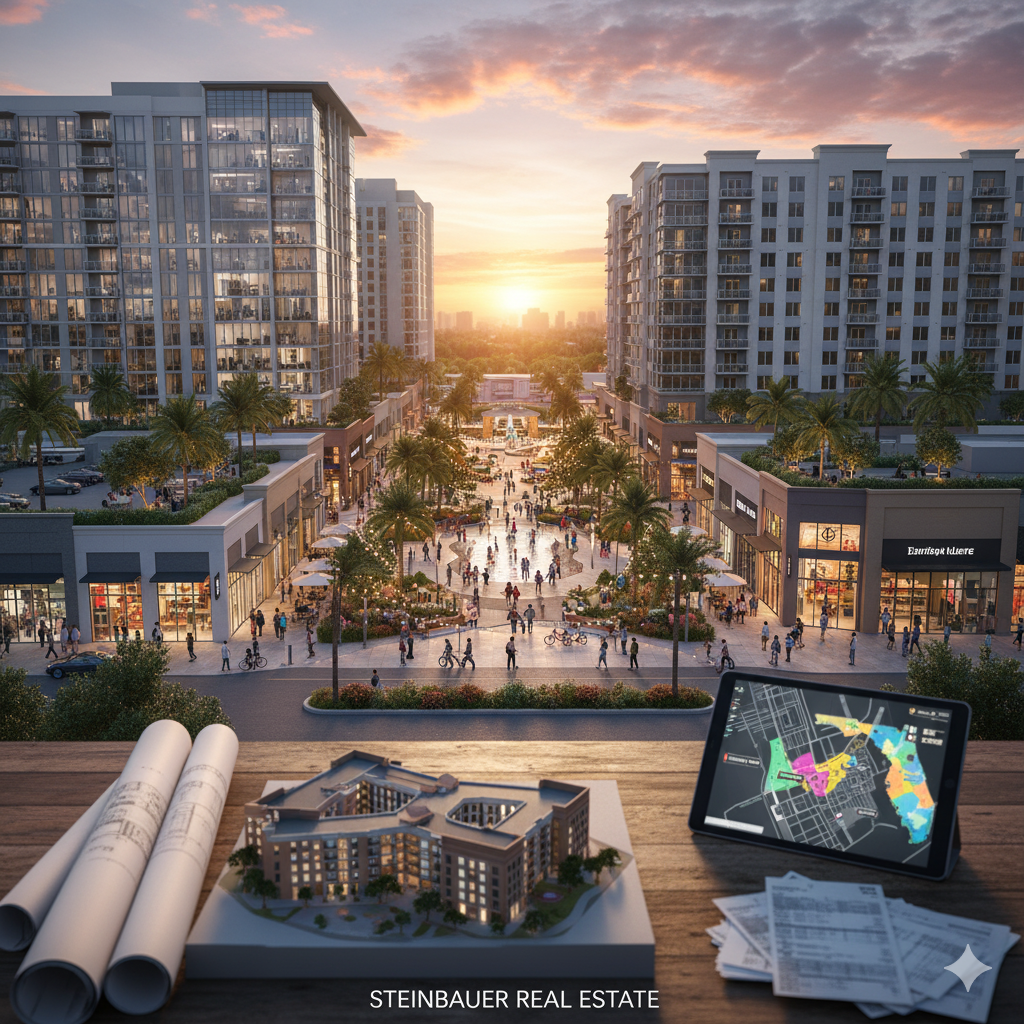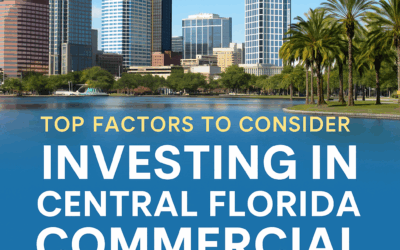The Rise of Mixed-Use Developments in Florida: Building the Future of Live-Work-Play
Walkable, vibrant, and seamlessly connected—that’s the new face of commercial development in Florida. Over the past few years, mixed-use developments have surged from niche experiments to mainstream investments. They blend residential, office, retail, and entertainment into one cohesive space—and Floridians are flocking to them. At Steinbauer Real Estate, we see this as one of the strongest long-term trends shaping the state’s commercial real estate (CRE) landscape.
What Are Mixed-Use Developments?
Mixed-use developments combine different property types into a single, cohesive environment. A typical project may include luxury apartments, coworking spaces, restaurants, fitness centers, and boutique retail—often centered around public gathering areas like parks or plazas.
Think of it as a small city within a city: everything you need is within walking distance. This concept is hardly new, but the scale, design sophistication, and market demand in Florida have reached an all-time high.
Why Florida Is Perfect for Mixed-Use Growth
Florida’s demographic and economic trends make it fertile ground for these projects:
- Population Growth: Florida is one of the fastest-growing states, adding over 1,000 new residents daily.
- Migration of Young Professionals: Millennials and Gen Z want vibrant, walkable neighborhoods and social amenities.
- Tourism Economy: Florida’s hospitality-driven markets benefit from destinations that can serve locals and visitors alike.
- Land Constraints in Urban Centers: Mixed-use density maximizes limited land in cities like Miami and Tampa.
Flagship Florida Examples
- Miami Worldcenter: One of the largest private urban developments in the U.S., it spans 27 acres with retail, residential, hospitality, and entertainment.
- Water Street Tampa: A $3.5 billion redevelopment bringing walkable streets, office towers, apartments, restaurants, and waterfront spaces together.
- The Packing District (Orlando): Blending food halls, coworking, housing, and green space in a revitalized historic area.
These aren’t just real estate projects—they’re entire communities that blur the lines between work, life, and leisure.
Investment Advantages of Mixed-Use Properties
Mixed-use developments offer compelling advantages for investors and developers:
- Diverse Income Streams: Multiple property types in one project spread out risk.
- Higher Per-Square-Foot Returns: Retail and residential spaces often command premium rents in these environments.
- Lower Vacancy Risk: The lifestyle appeal drives steady tenant demand.
- Community Anchor Effect: Mixed-use centers often revitalize surrounding neighborhoods, lifting property values.
Lenders and institutional investors increasingly favor projects that integrate multiple uses, seeing them as more resilient in volatile markets.
Challenges to Consider
Despite their upside, these projects are complex:
- High Upfront Costs: They require significant capital and longer build timelines.
- Complex Zoning/Permitting: Local approvals can be more complicated than single-use projects.
- Operational Complexity: Managing multiple property types under one roof requires expertise.
This is where experienced commercial real estate partners—like Steinbauer—add real value, navigating the development process from entitlement through lease-up.
The Future of Florida’s Cities Is Mixed-Use
Expect more Florida cities to embrace mixed-use zoning overlays, mobility-focused planning, and public-private partnerships. As consumer preferences shift away from long commutes and sterile office parks, demand for vibrant, mixed-use environments will only accelerate.
At Steinbauer Real Estate, we help clients identify emerging opportunities in this sector—whether it’s acquiring entitled land, assembling capital partners, or leasing space in next-generation communities. Mixed-use is no longer a trend. It’s the blueprint for Florida’s future.




